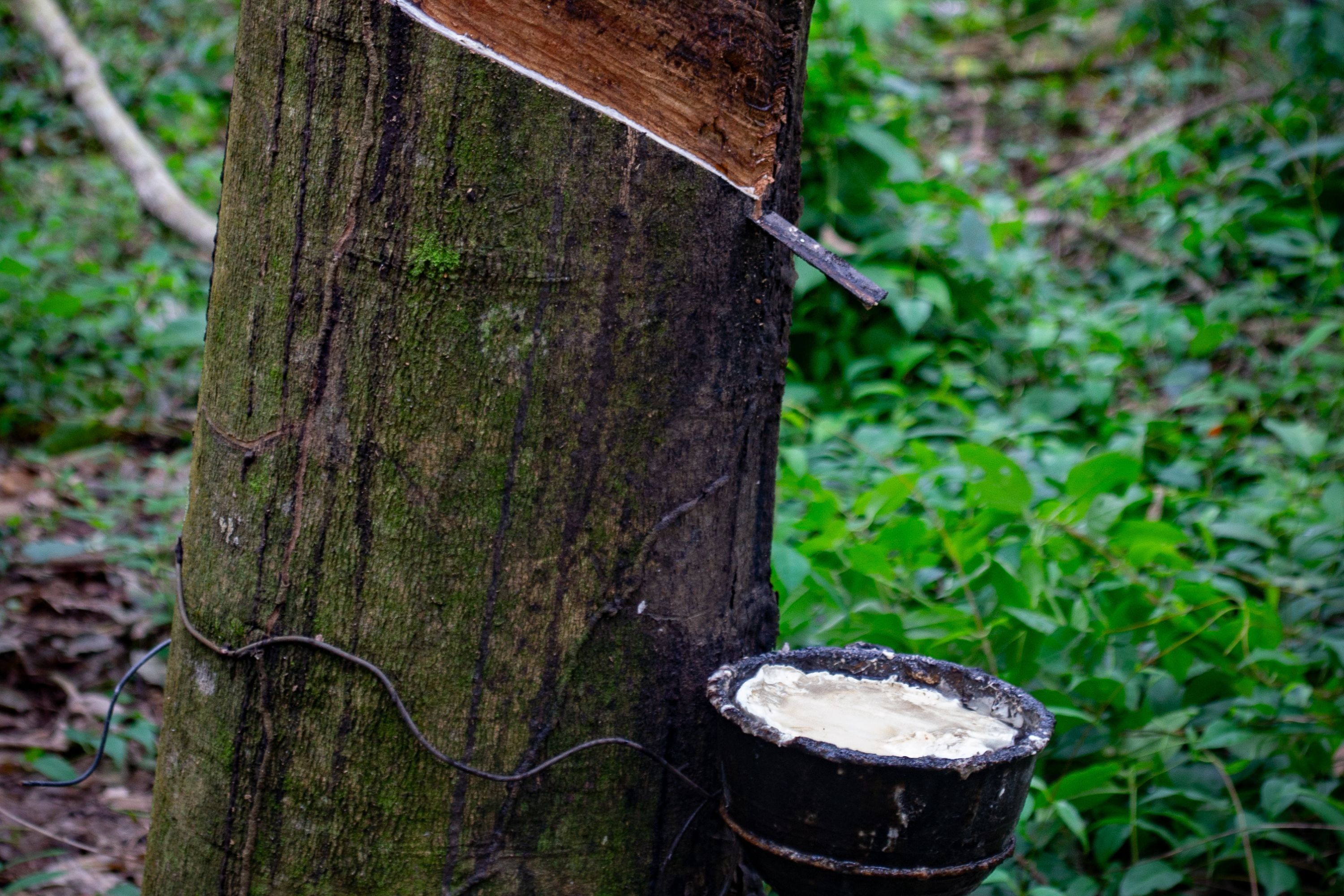Pará rubber tree
(Hevea brasiliensis)

Description
Hevea brasiliensis, the Pará rubber tree, sharinga tree, seringueira, or most commonly, rubber tree or rubber plant, is a flowering plant belonging to the spurge family Euphorbiaceae. It is the most economically important member of the genus Hevea because the milky latex extracted from the tree is the primary source of natural rubber. H. brasiliensis is a tall deciduous tree growing to a height of up to 43 m (141 ft) in the wild, but cultivated trees are usually much smaller because drawing off the latex restricts the growth of the tree. The trunk is cylindrical and may have a swollen, bottle-shaped base. The bark is some shade of brown, and the inner bark oozes latex when damaged. The leaves have three leaflets and are spirally arranged. The inflorescence include separate male and female flowers. The flowers are pungent, creamy-yellow and have no petals. The fruit is a capsule that contains three large seeds; it opens explosively when ripe. In the wild, the tree can reach a height of up to 140 feet (43 m). The white or yellow latex occurs in latex vessels in the bark, mostly outside the phloem. These vessels spiral up the tree in a right-handed helix which forms an angle of about 30 degrees with the horizontal, and can grow as high as 45 ft. In plantations, the trees are generally smaller for two reasons: 1) trees grow more slowly when they are tapped for latex, and 2) trees are generally cut down after only 30 years, because latex production declines as trees age, and they are no longer economically productive. The tree requires a tropical or subtropical climate with a minimum of about 1,200 mm per year of rainfall, and no frost. If frost does occur, the results can be disastrous for production. One frost can cause the rubber from an entire plantation to become brittle and break once it has been refined."
Taxonomic tree:







